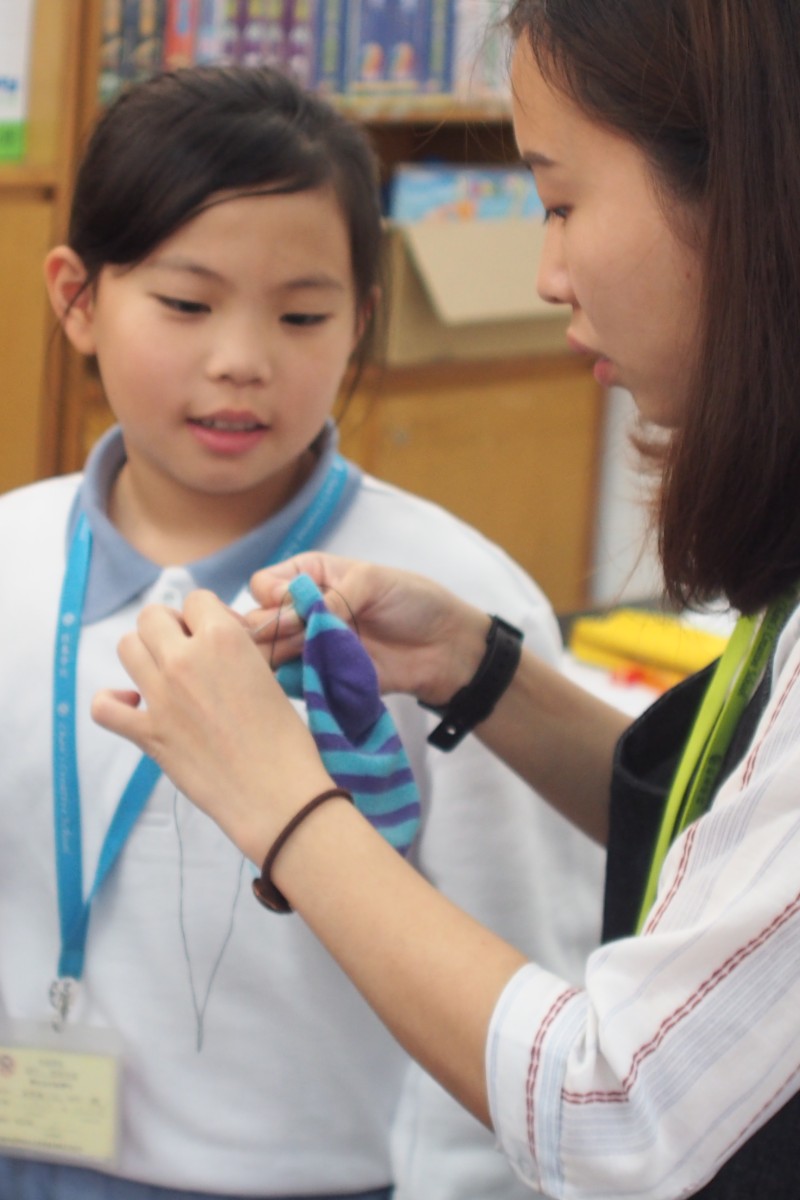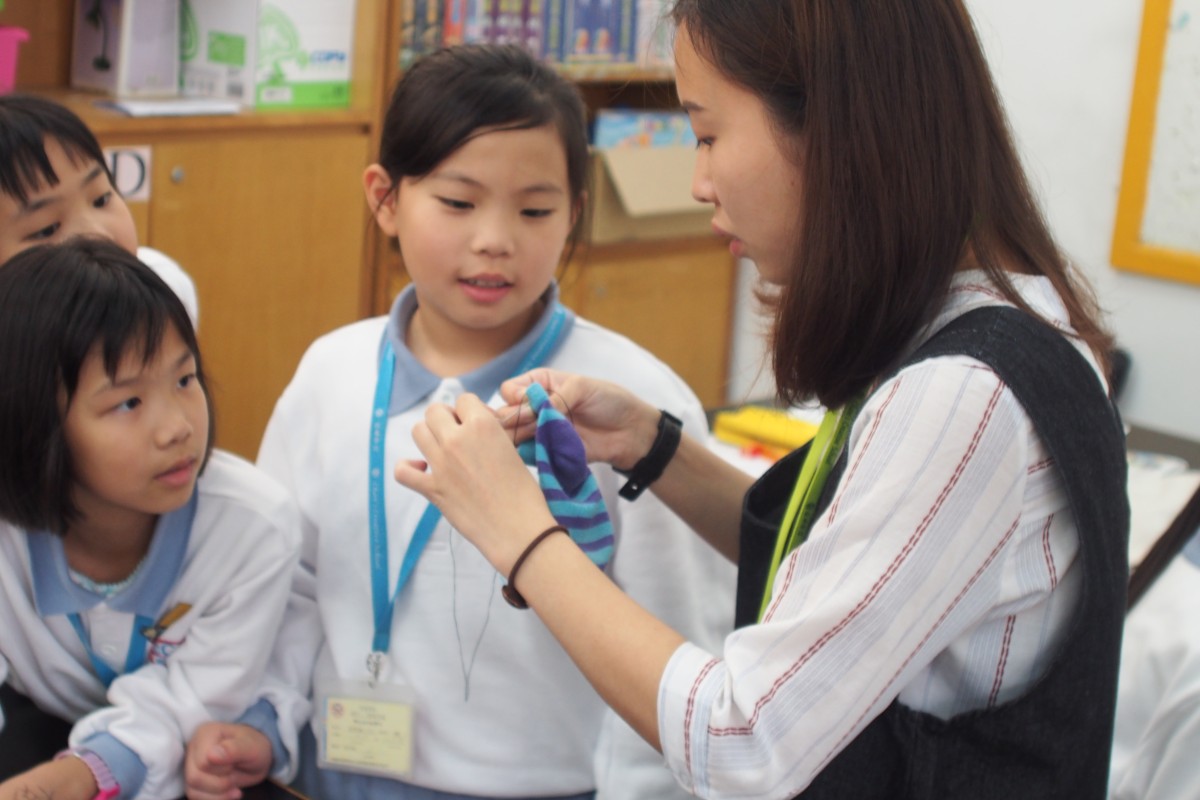
Teaching students about repairing old items, with a little help from 3D printers
Sponsored Feature
 Student tutors from EdUHK guiding primary students to develop creative methods for repairing socks at Chan's Creative School.
Student tutors from EdUHK guiding primary students to develop creative methods for repairing socks at Chan's Creative School. Almost everything is easy to come by in Hong Kong, which means people are disinclined to repair slightly damaged items and usually replace them instead. However, it makes sense to encourage the habit of repairing whenever possible, and devising interesting games and projects for youngsters may be a good way to start.
Teaching about the need to repair has already been made an integral part of the Creativity and STEM/STEAM Minor programme at The Education University of Hong Kong (EdUHK). In parallel, the university is also conducting a project under the Quality Education Fund (QEF) entitled “Developing and Promoting Creative Environmental Practices in Primary School Education”.
Providing support for asylum seekers and refugees in Hong Kong with volunteer students from EdUHK
This project promotes a range of pro-environmental practices, including the introduction of classes on repairing in primary schools around Hong Kong. Student teachers are assigned to tutor young children in creative ways to repair and reuse, or “upcycle”, day-to-day items like socks, umbrellas, toys, schoolbags, drinking bottles and watchstraps.
The primary students are asked to brainstorm and come up with as many ways as possible of repairing by trying strategies like substituting, combining, adapting, eliminating, and putting things to other uses.
For example, a hole in a sock can be repaired by darning it, but alternatively it could be enlarged to make the sock a leg warmer. Or the hole could be patched with different materials and turned into mittens.
Besides conducting such lessons, the Tai Po Old Market Public School, which has close links with EdUHK, has adopted the European “repair café” concept by setting up a “repair corner” on their premises. A number of ambassadors of the initiative provide repair services for their schoolmates each morning before class. They have already helped to fix all kinds of broken or damaged items.
Repairing is also an important aspect of general STEM education. For instance, under the supervision of student teachers from EdUHK, youngsters learn how to use needles and thread, electric glue guns, lubricant spray, hammer and nails, and other tools which tie in with STEM activities in the classroom.
Learning outside the classroom: the benefits of the exchange programme at EdUHK
Primary students are fascinated by the idea of trying their hand with such tools and using them to create their own small miracles. One of the more challenging tasks they tackle is using 3D printing to repair specific items. In a summer camp, EdUHK student teachers offer guidance in how to visualise or imagine the 3D shape of lost or broken parts and then to come up with an accurate measurement of them. After that, it is possible to draw 3D graphic diagrams to create a replacement part.
Many primary students find this mathematical task very difficult, but most also enjoy the exploration process and working with their tutors. For everyone involved, there is also real satisfaction in learning how new technologies can give something considered old and useless a completely new lease of life. Whether repairing, remaking or reinventing, the primary students – and the tutors – can give full rein to their creativity and spread the message about environmental education.